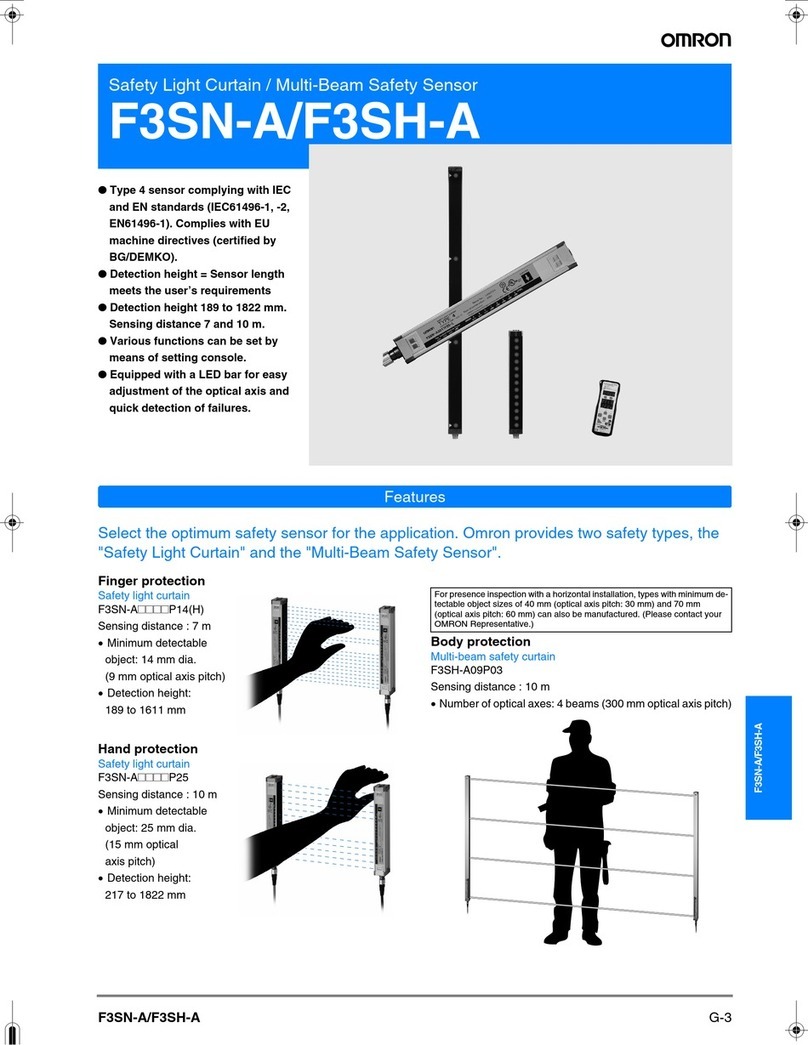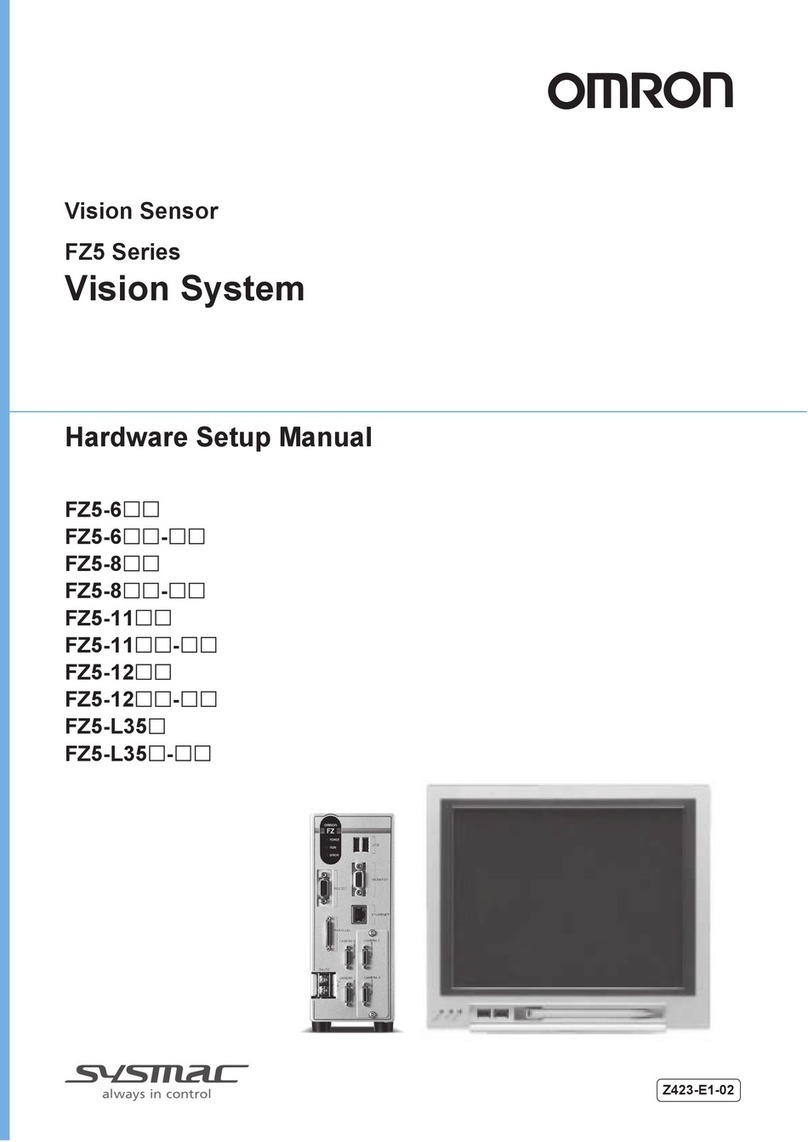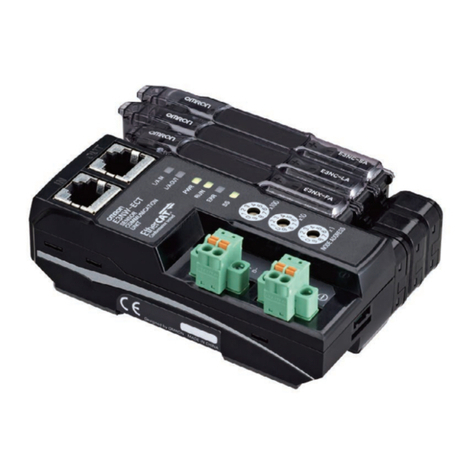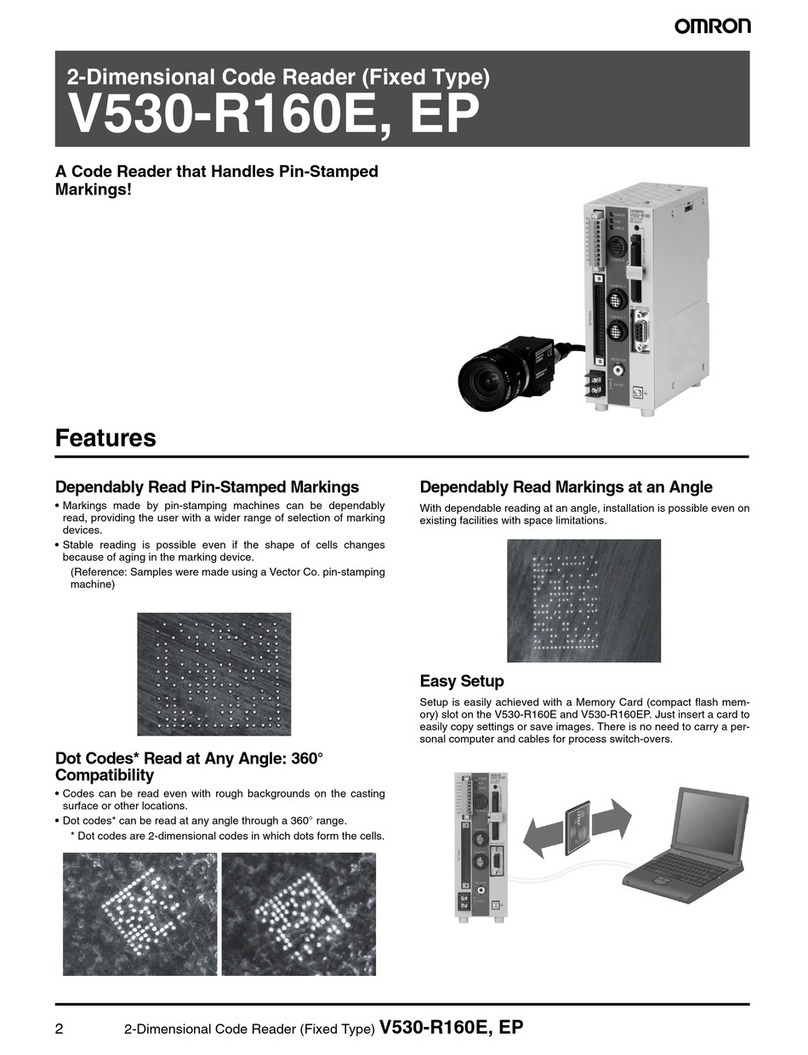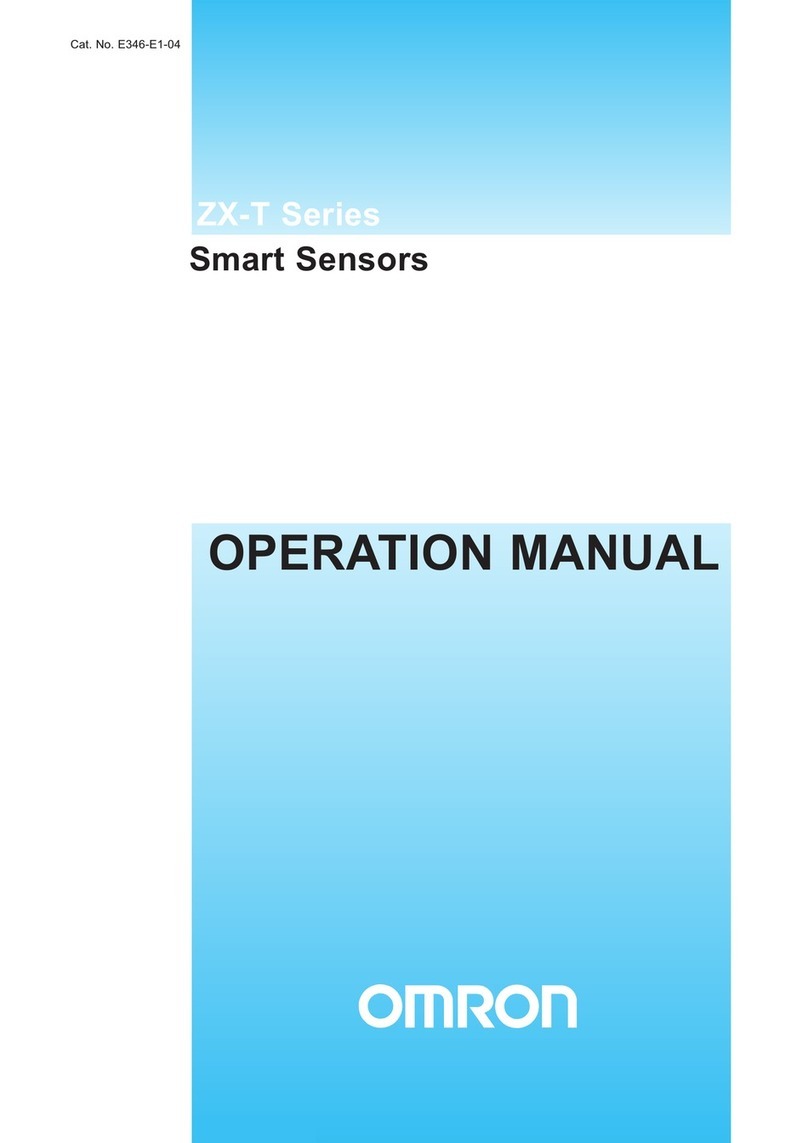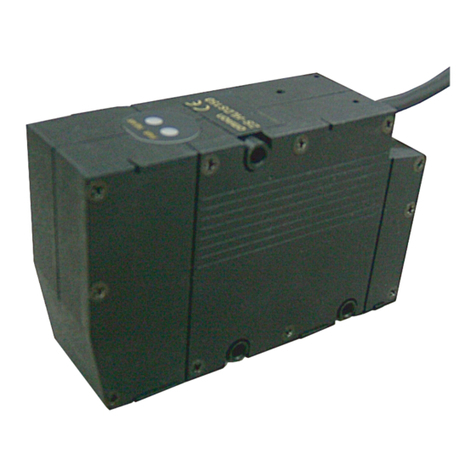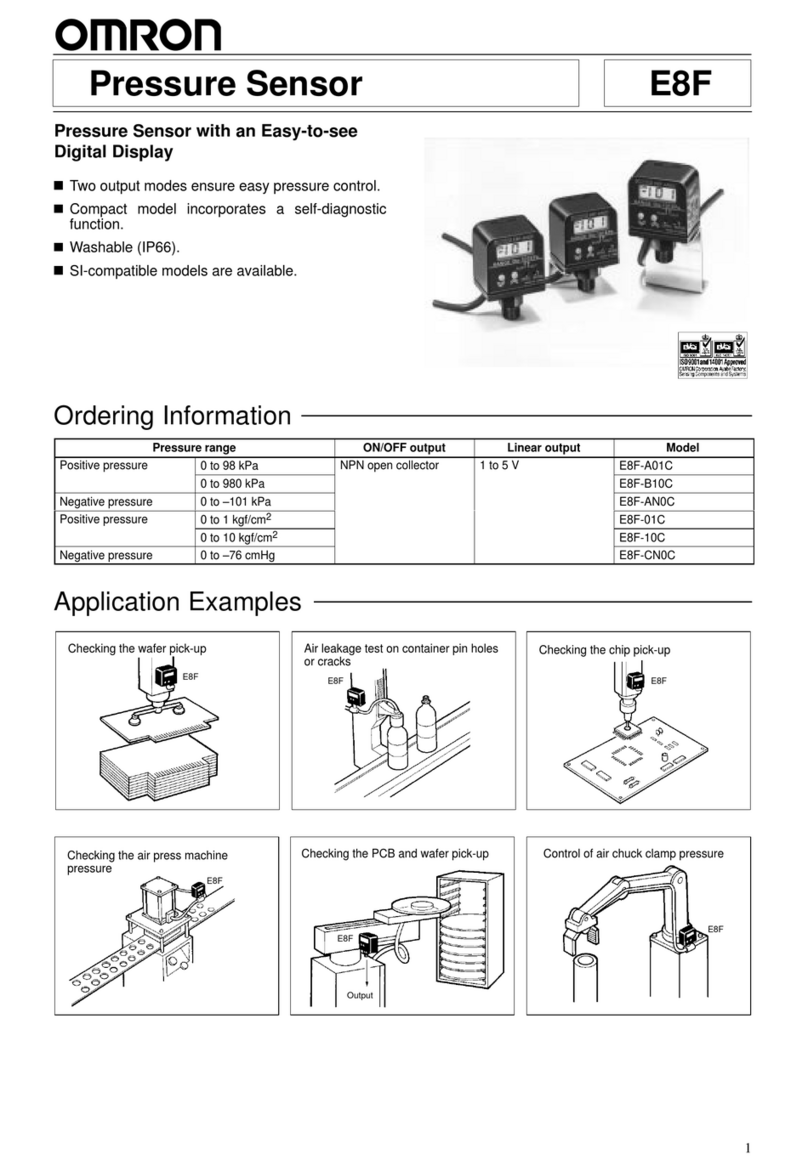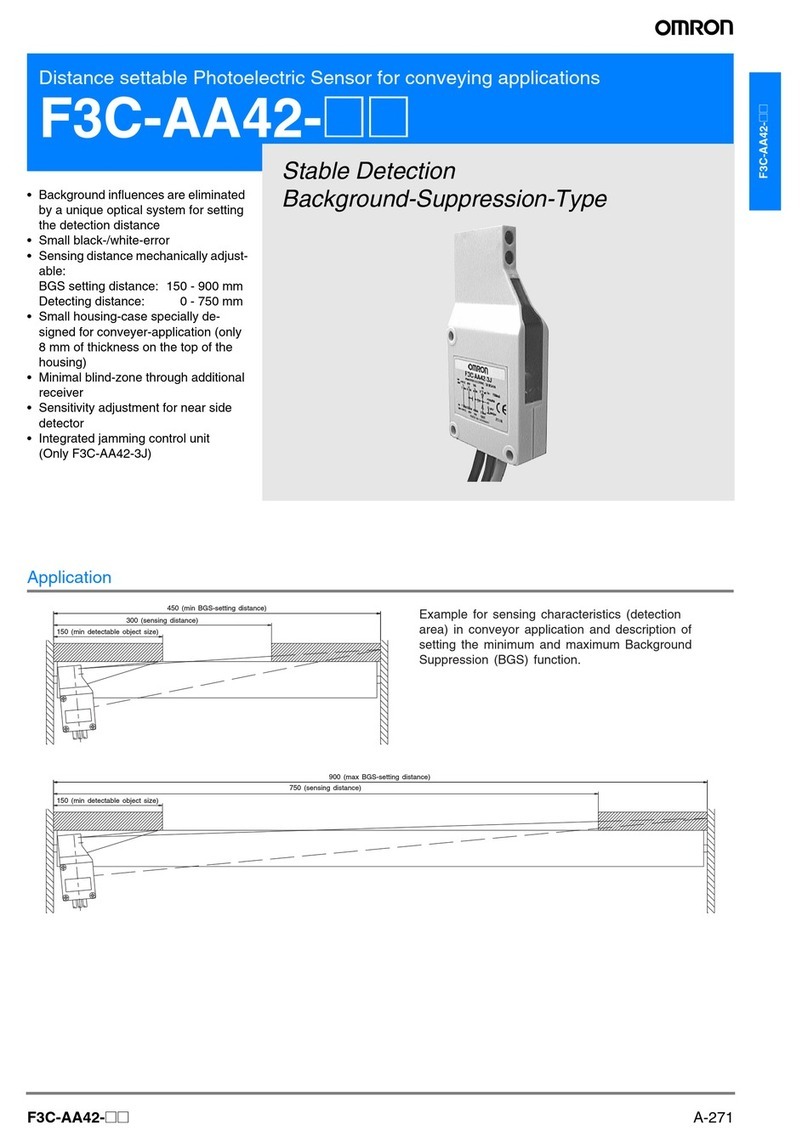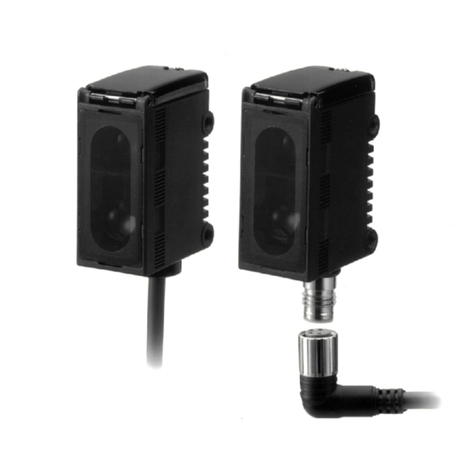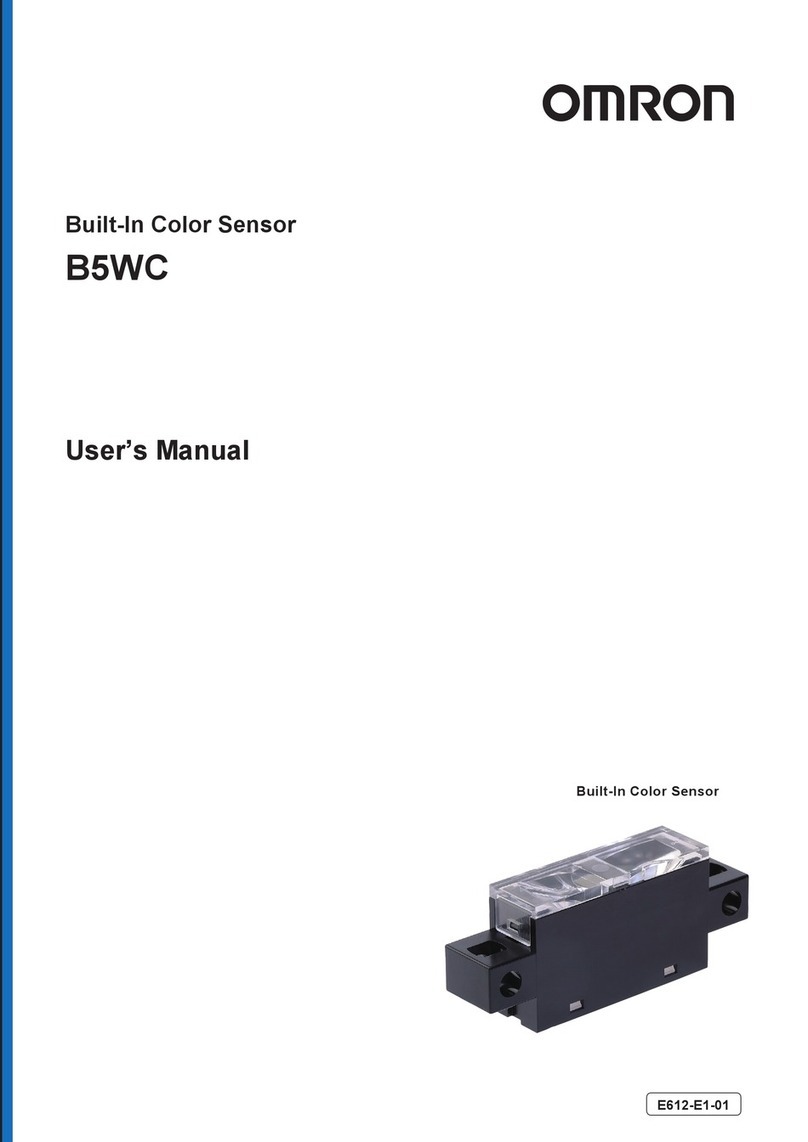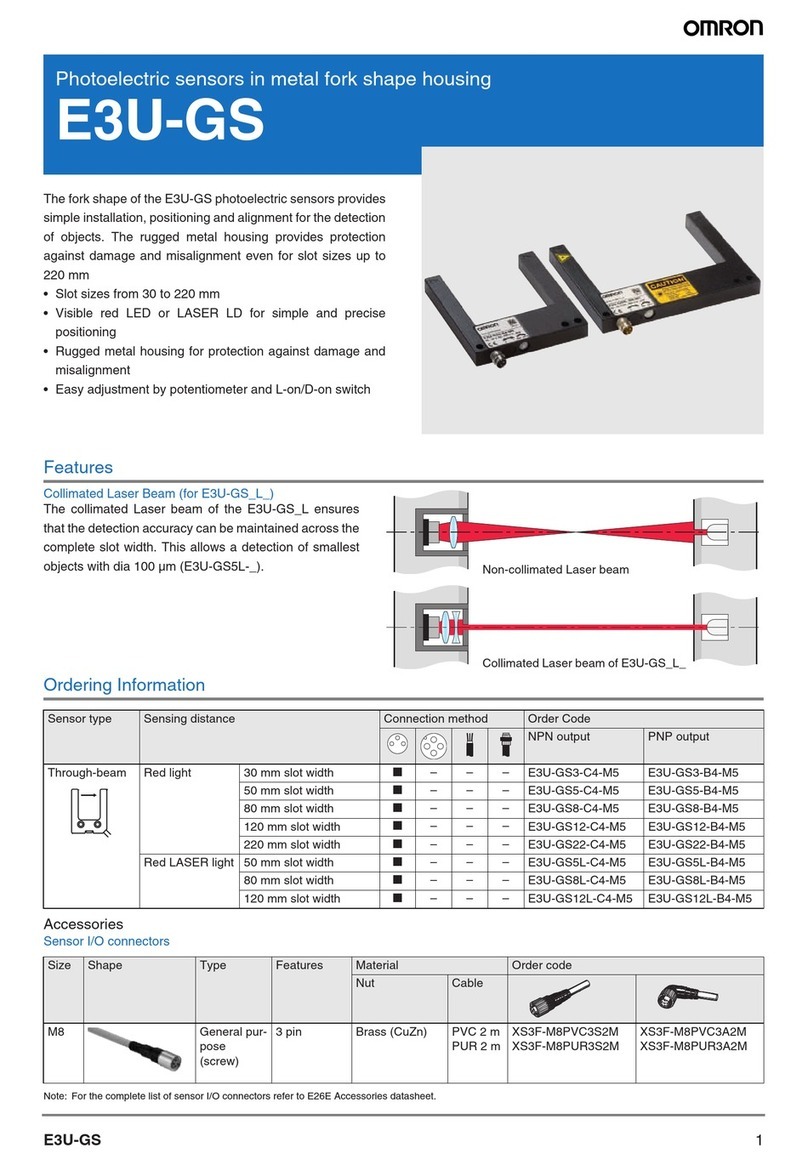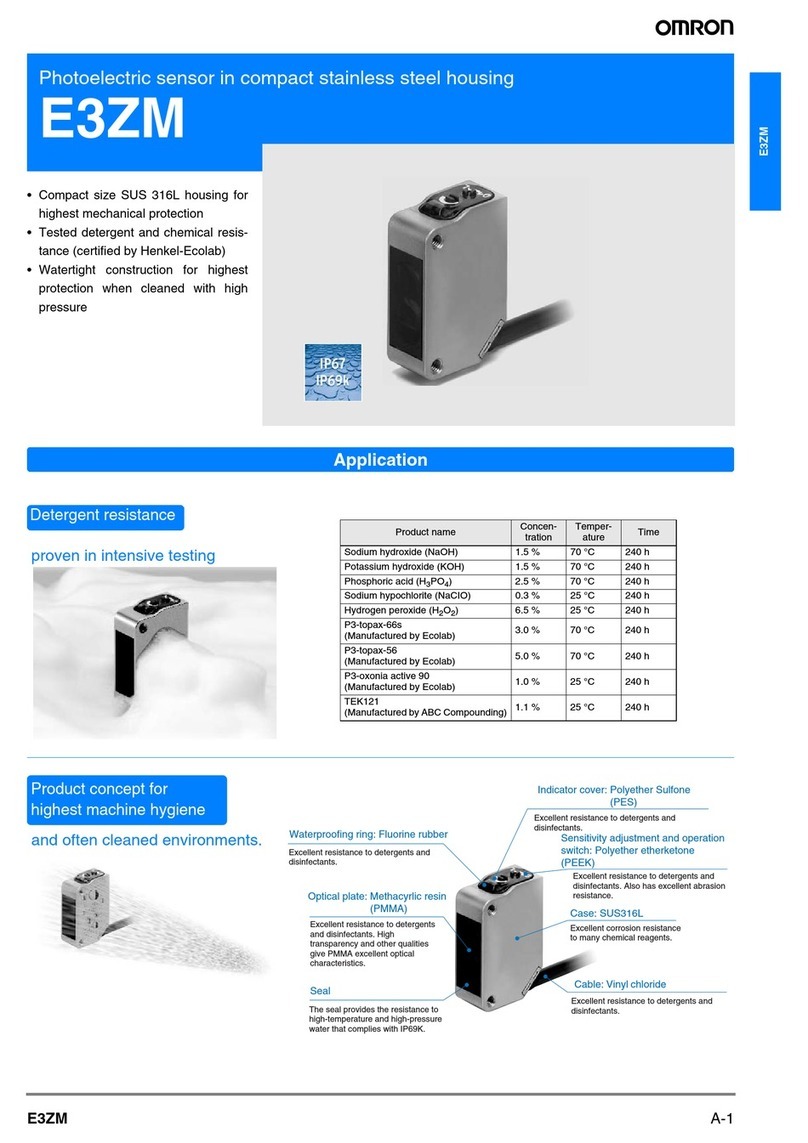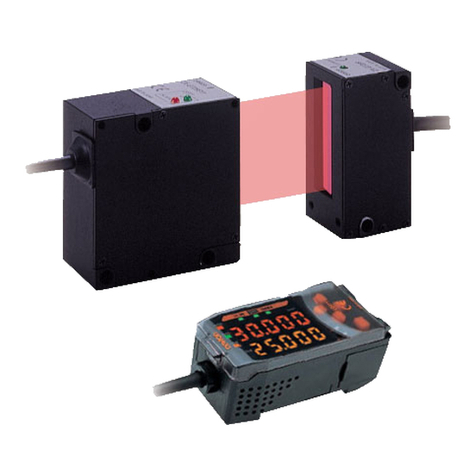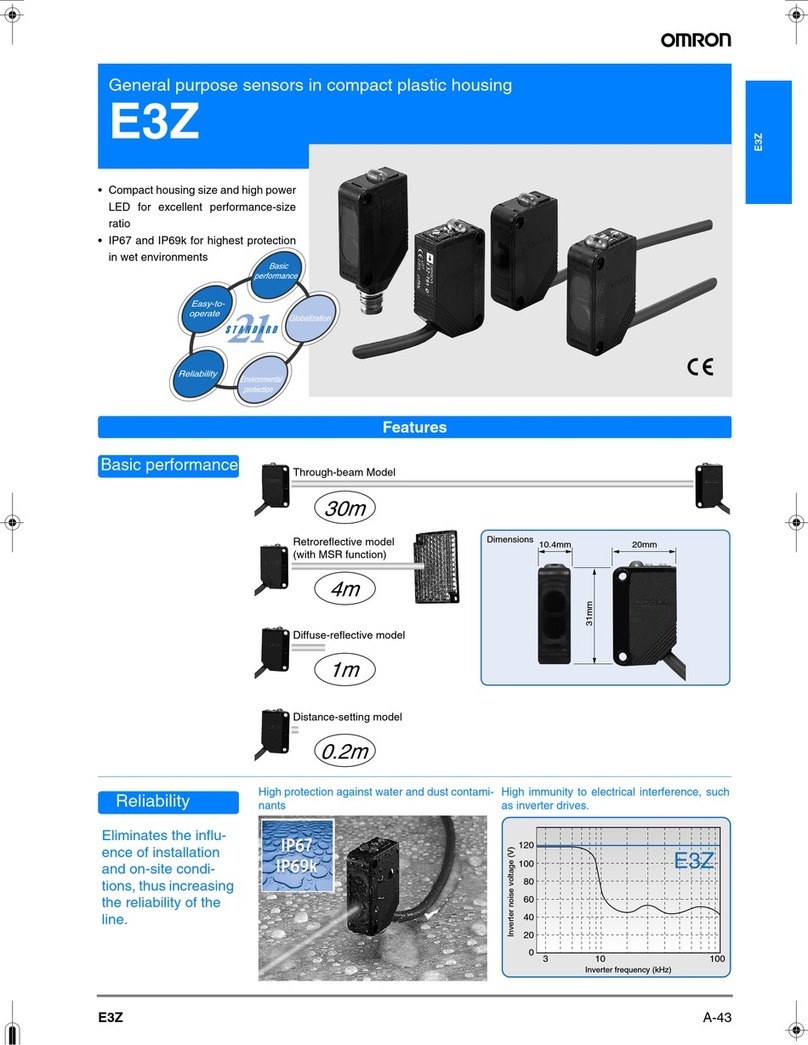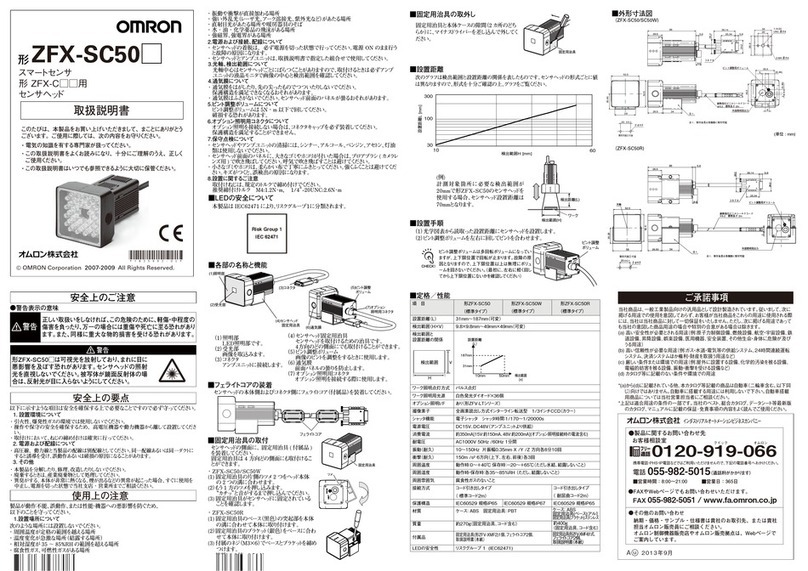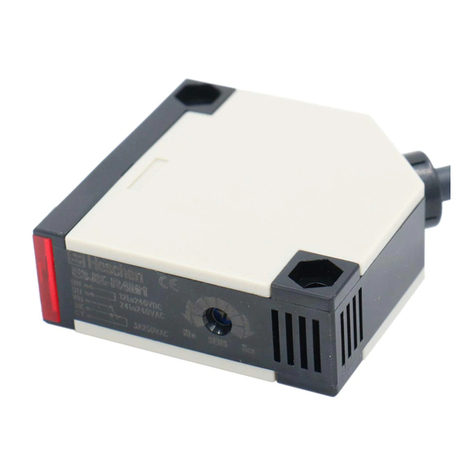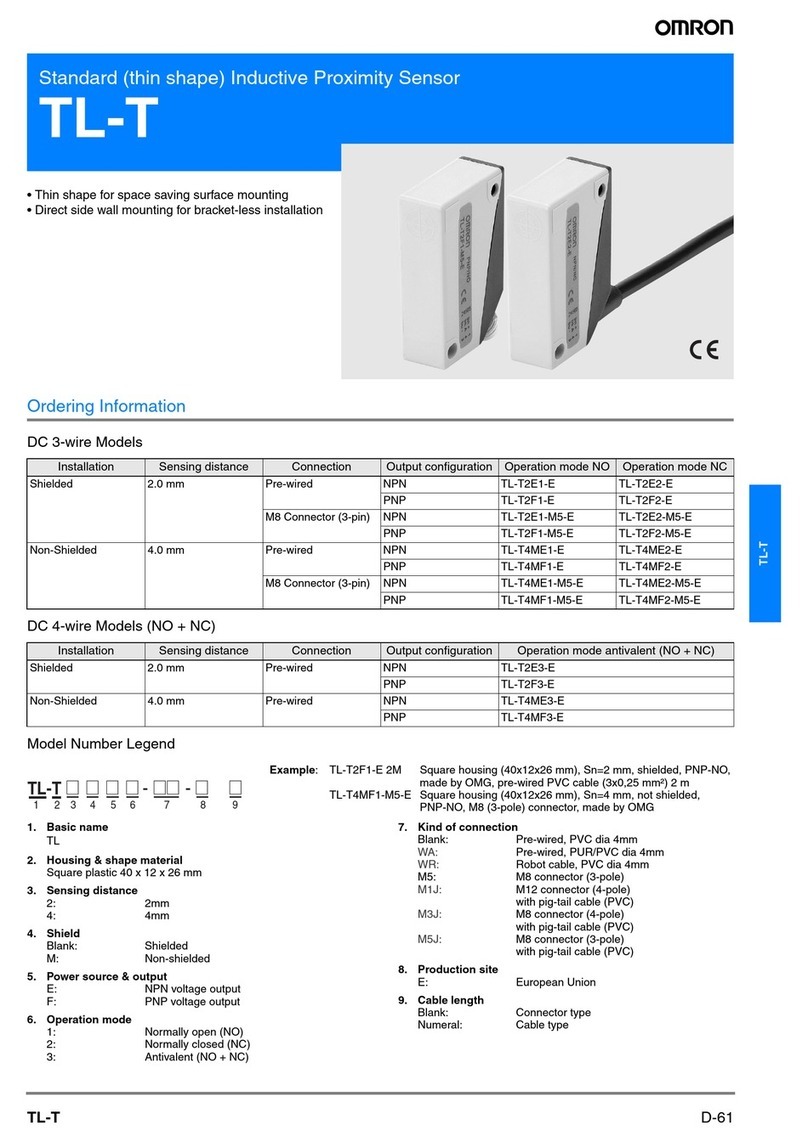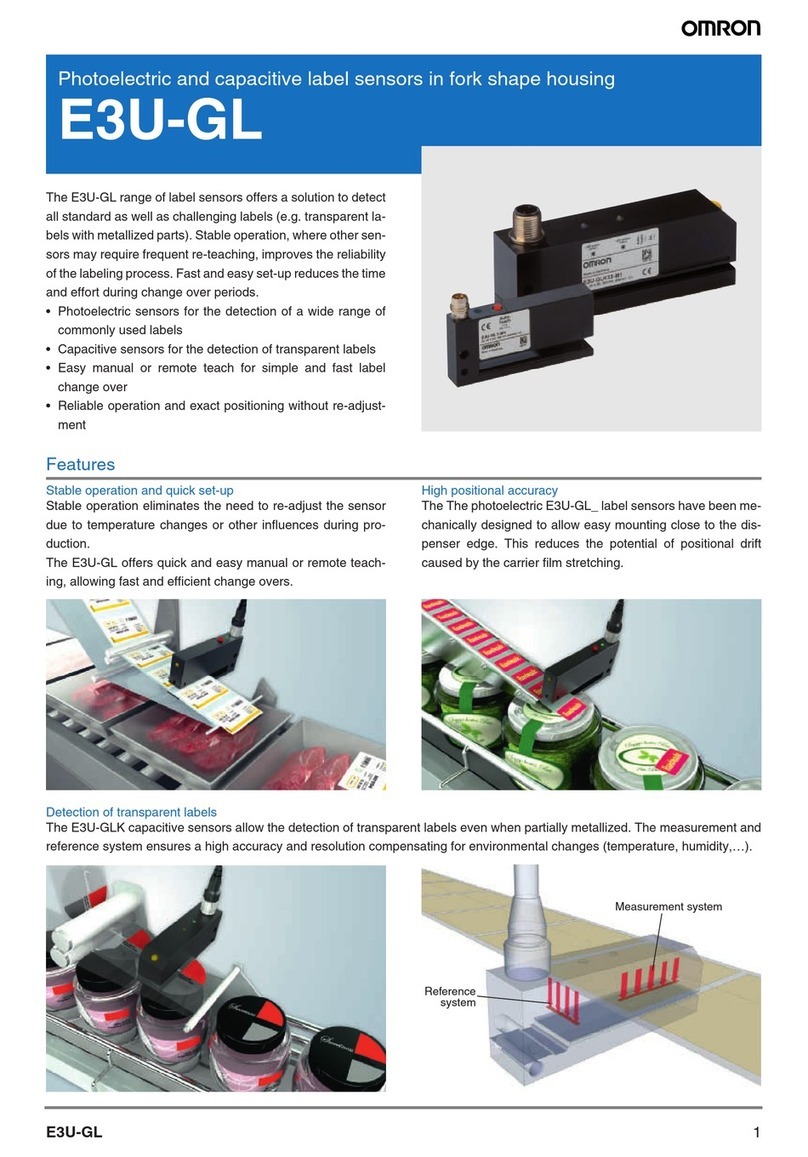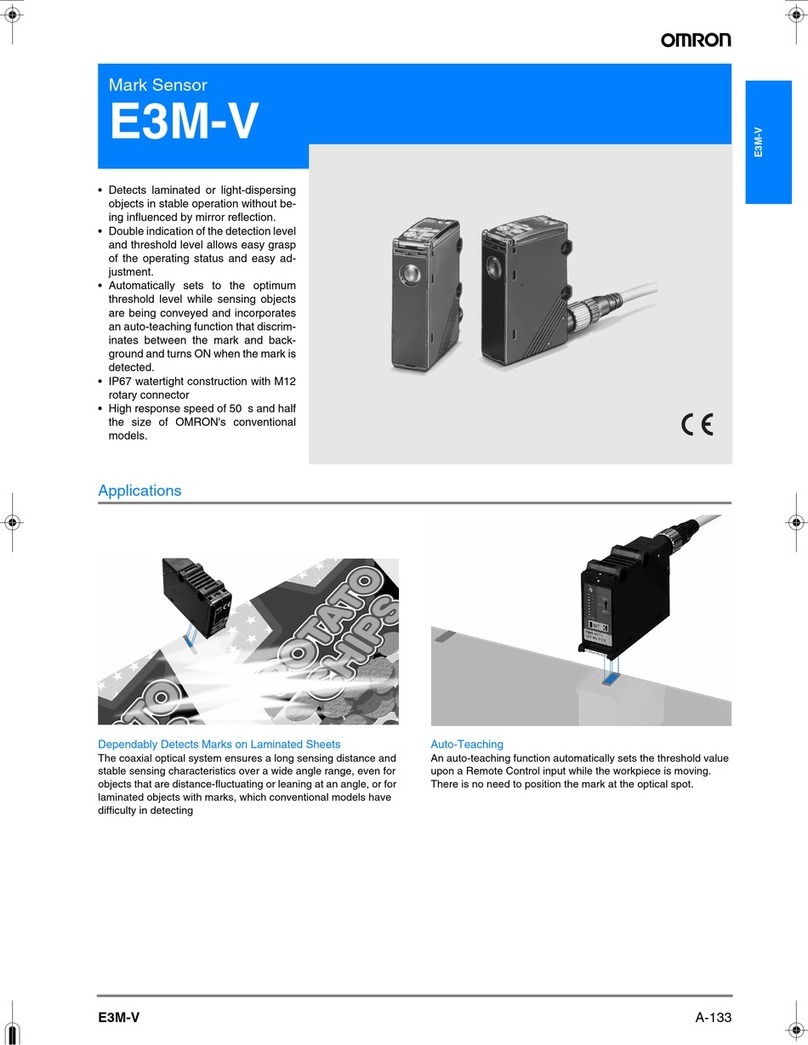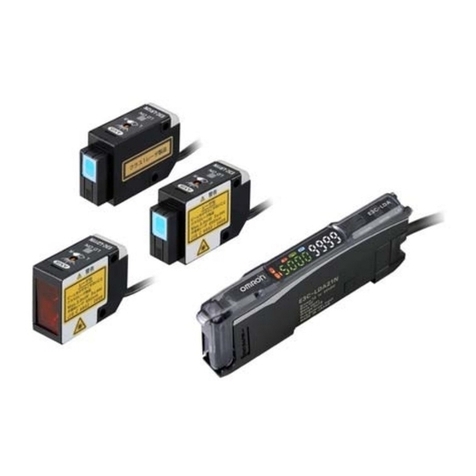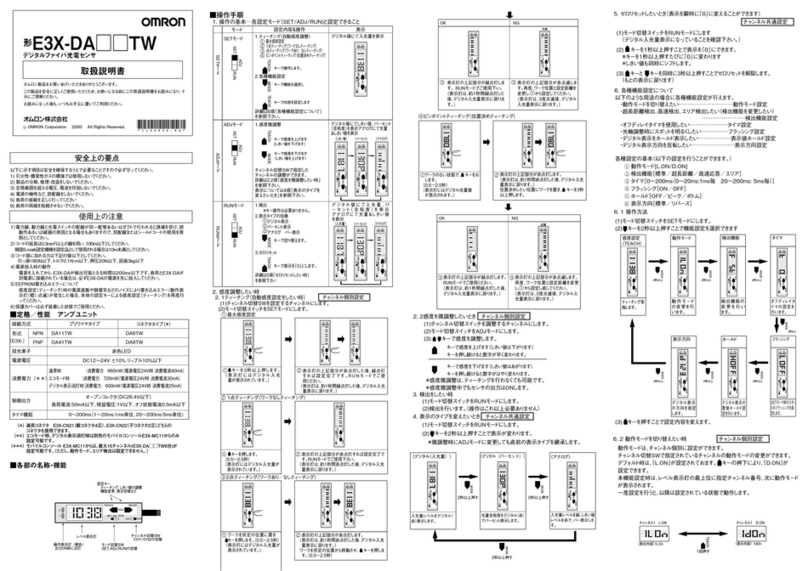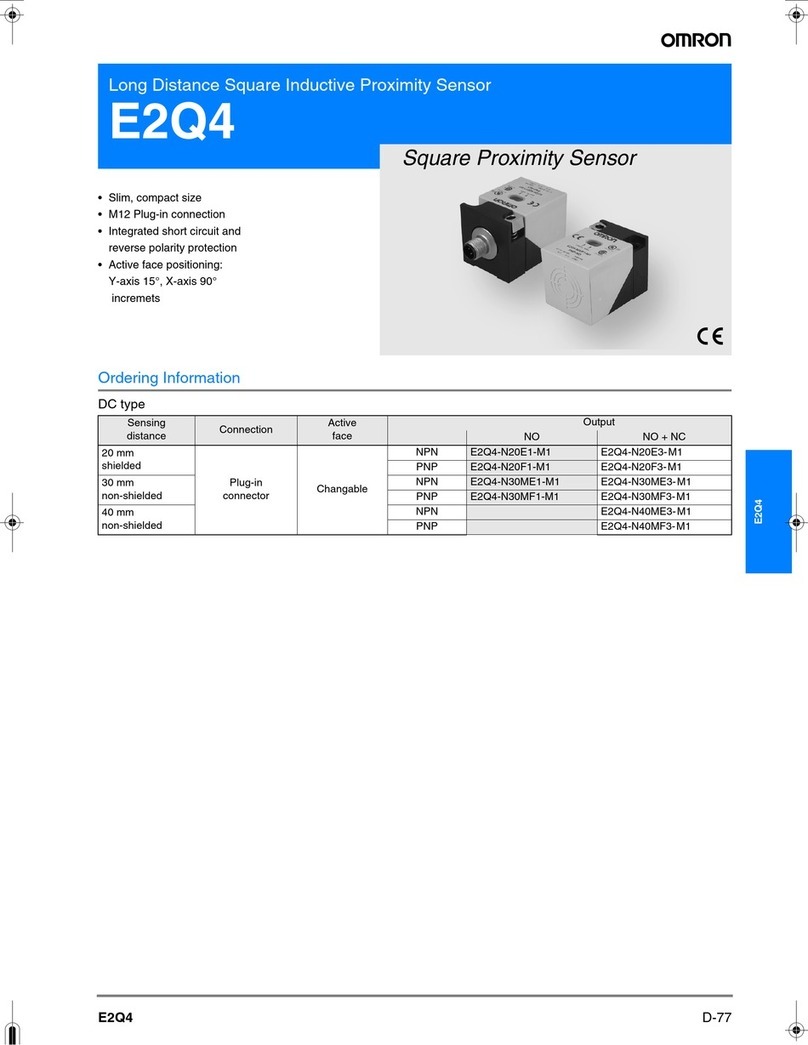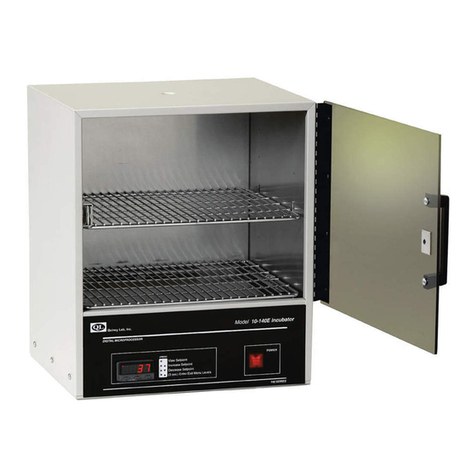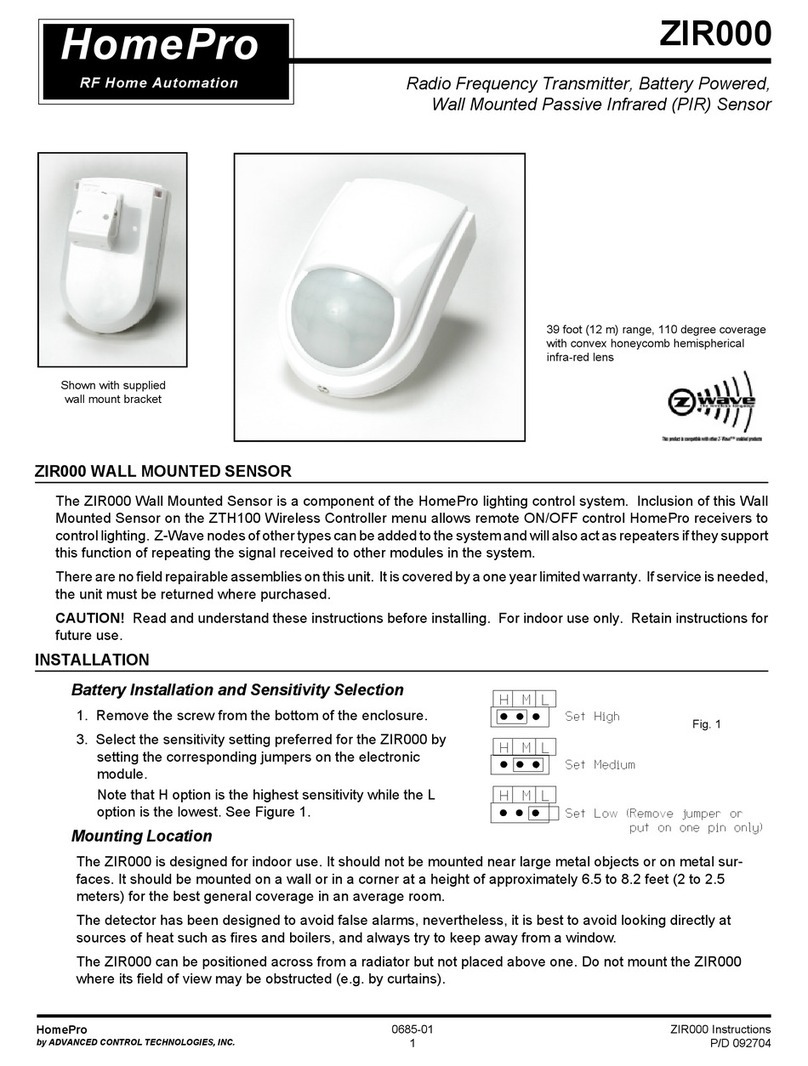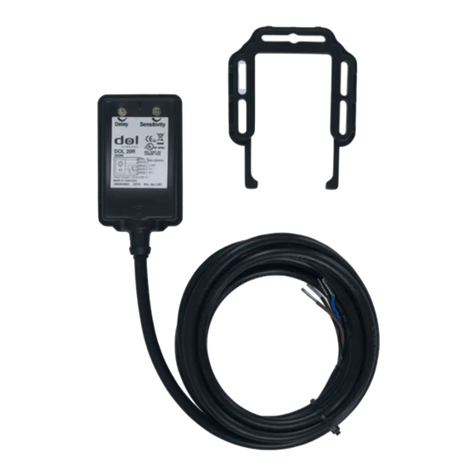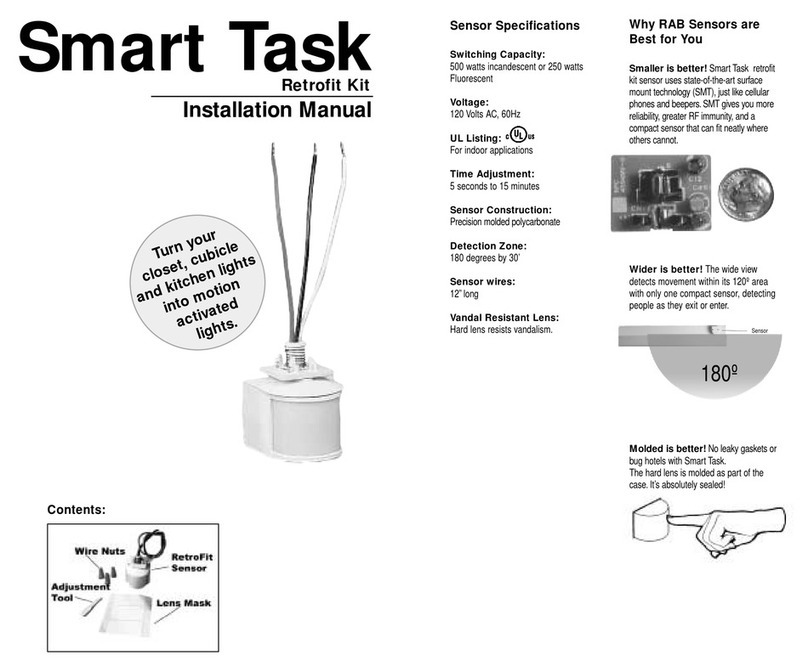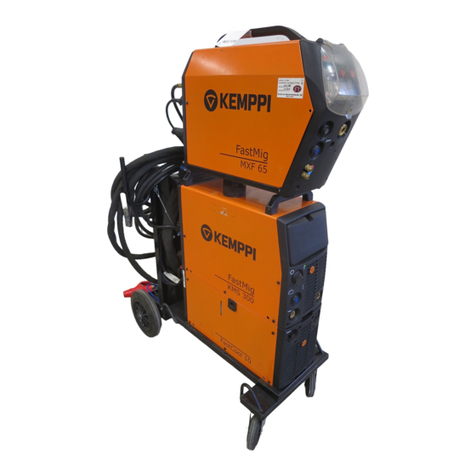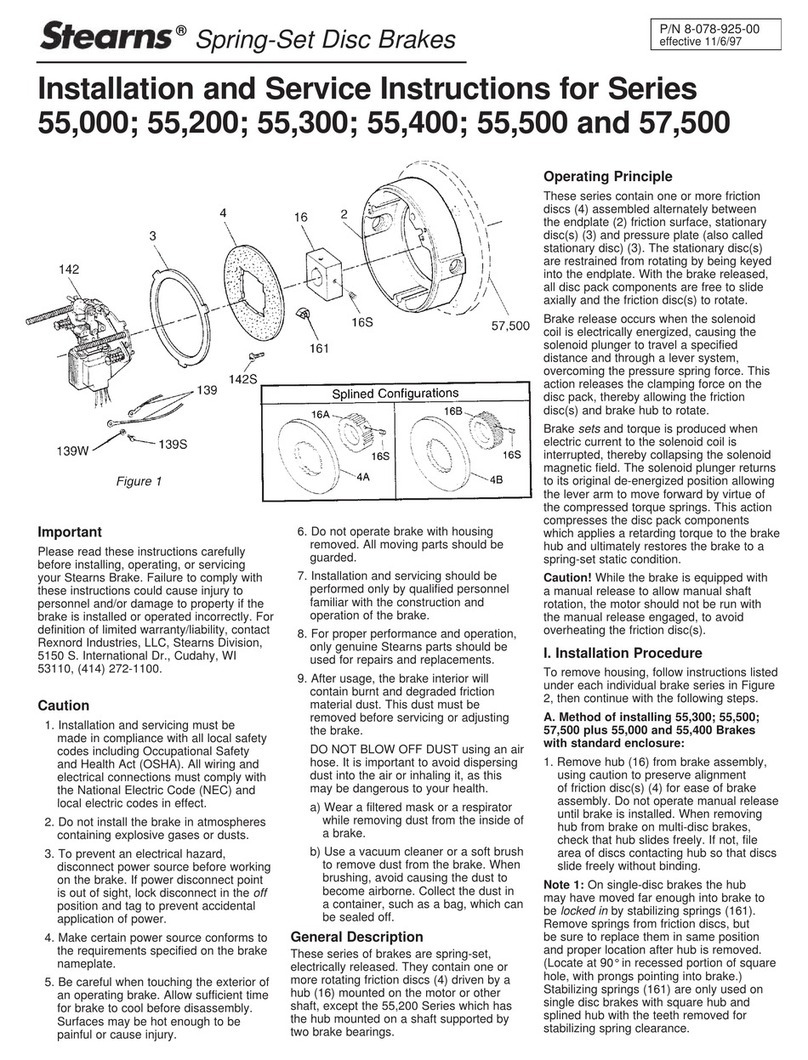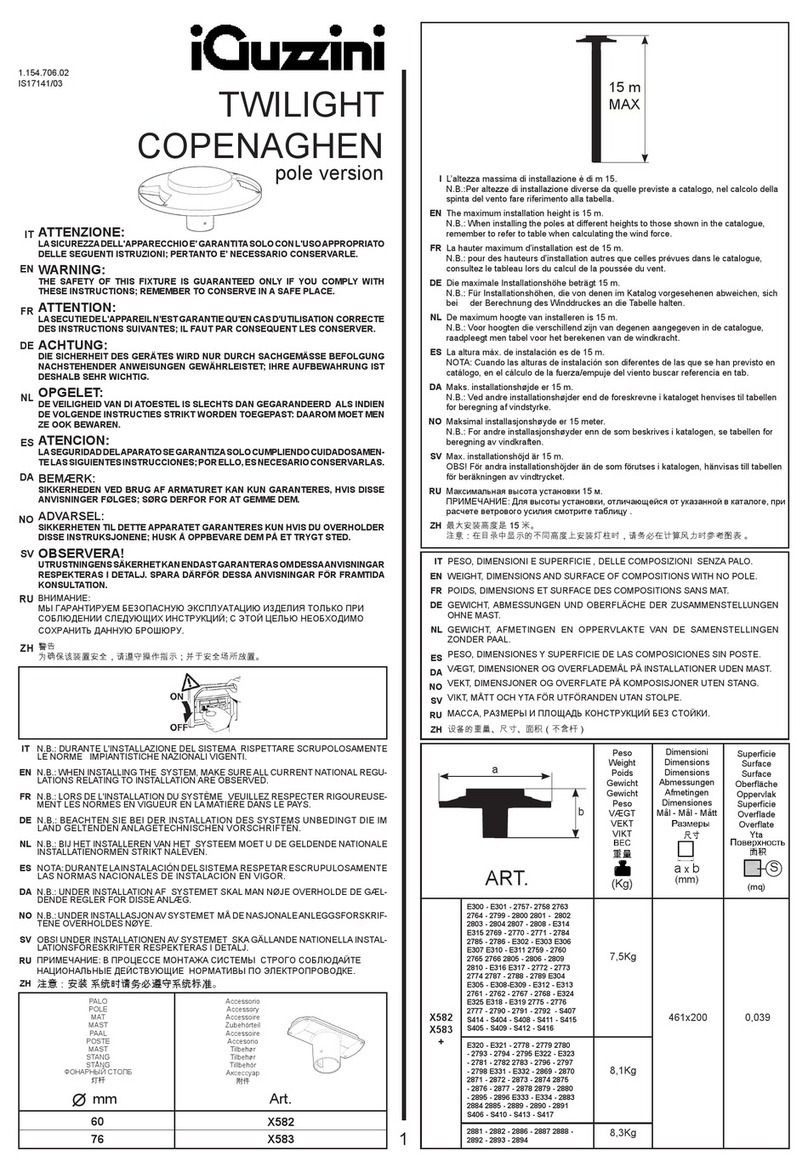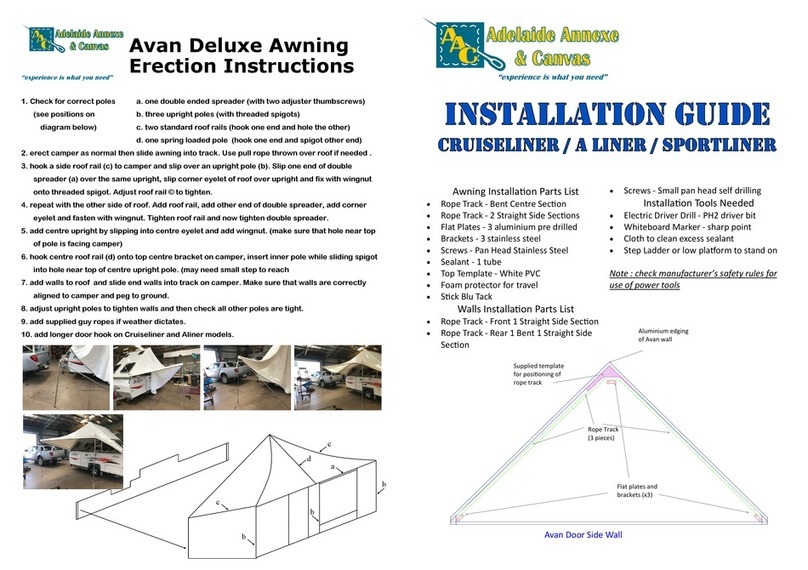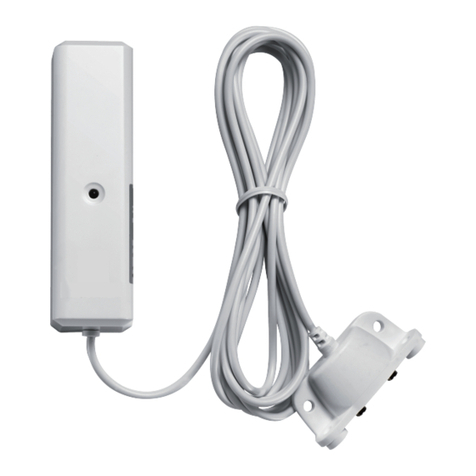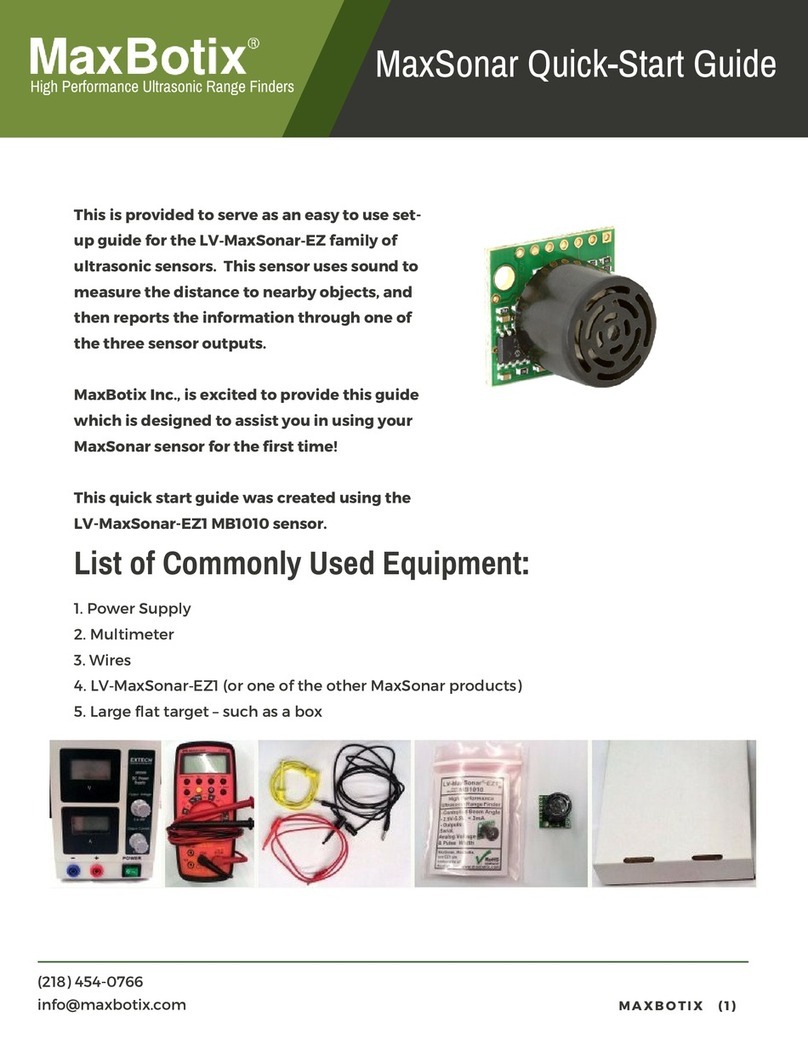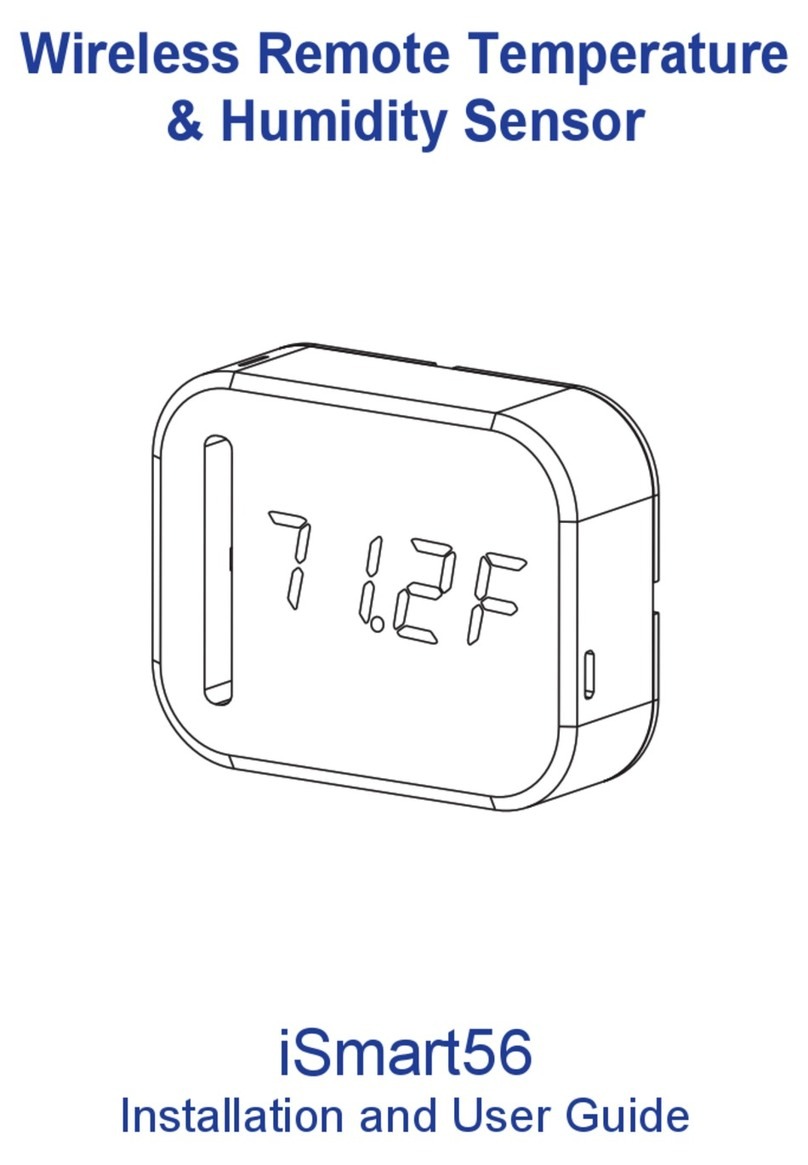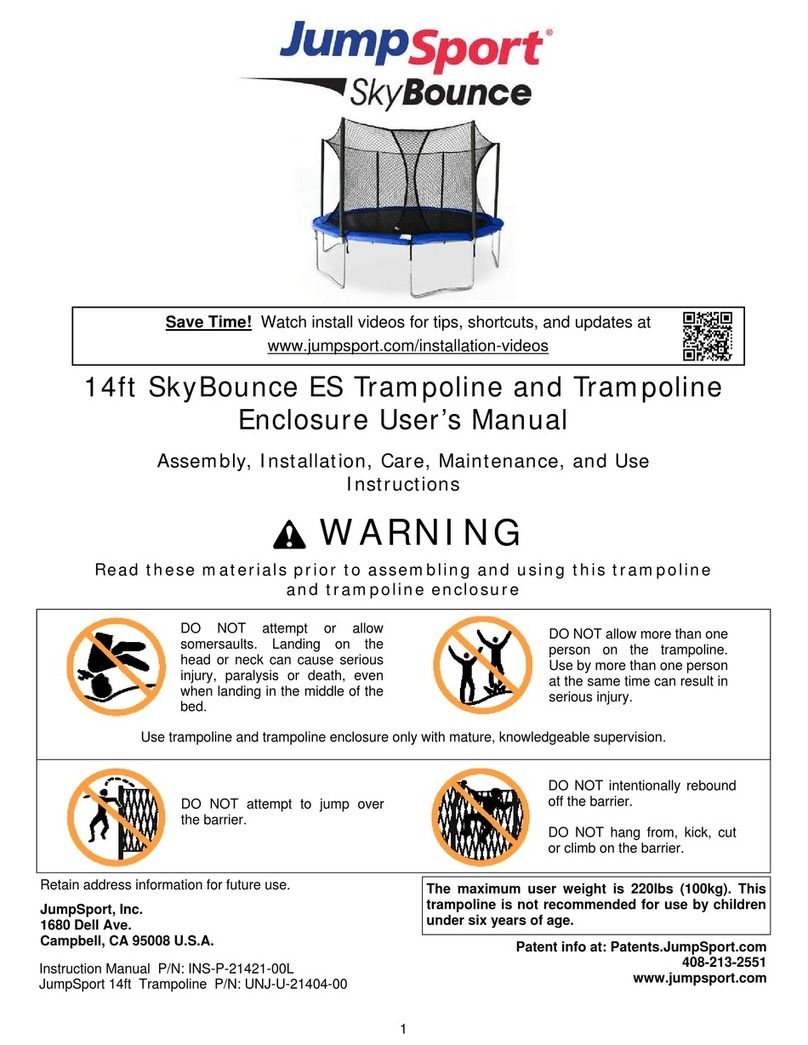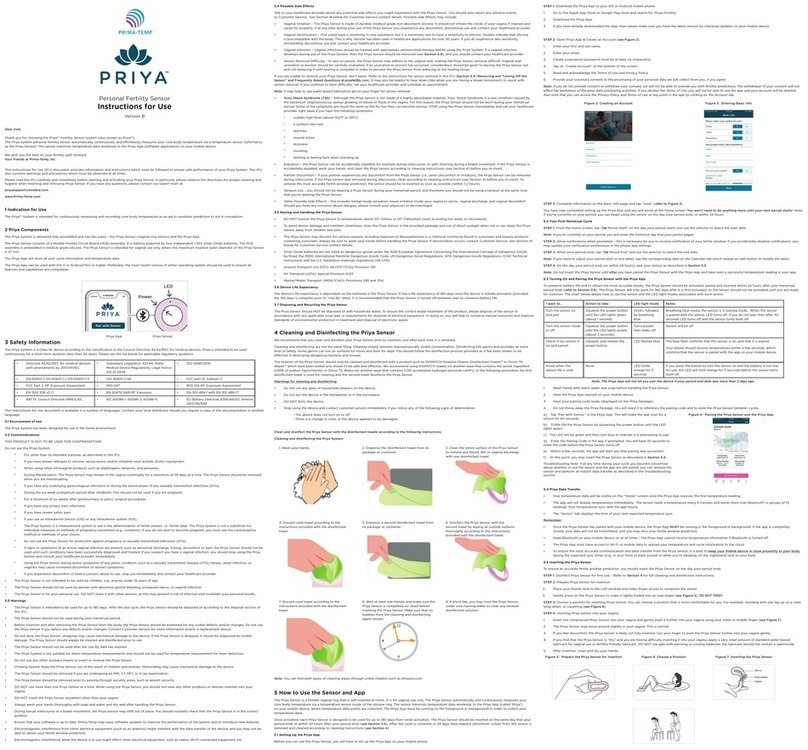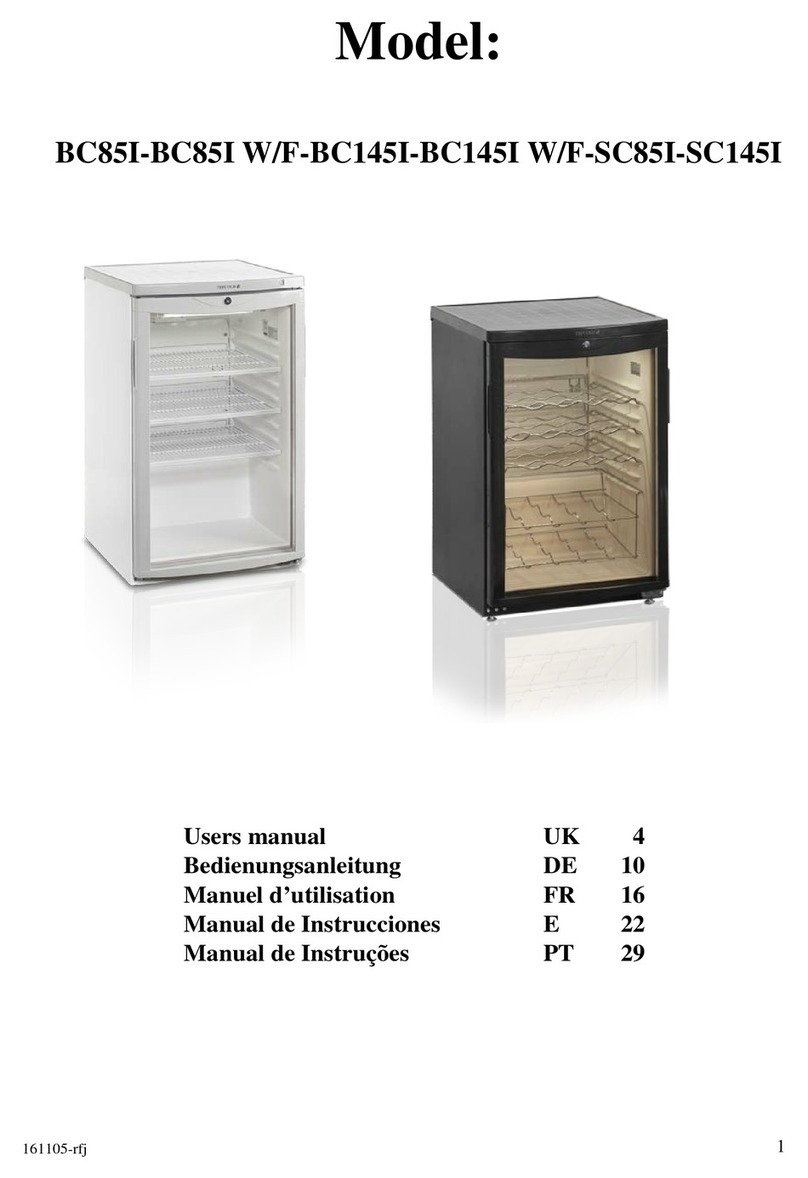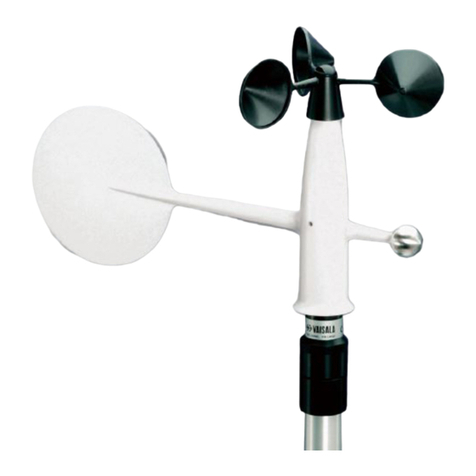
E2EM E2EM
3
E2EM-XjBj/CjDC 3-wire Models
Item E2EM-X2Bj/Cj
(-M1) E2EM-X4Bj/Cj
(-M1) E2EM-X8Bj/Cj
(-M1) E2EM-X15Bj/Cj
(-M1)
Size M8 M12 M18 M30
Type Shielded
Sensing
distance
2 mm
±10%
4 mm
±10%
8 mm
±10%
15 mm
±10%
Setting distance
0 to 1.6 mm 0 to 3.2 mm 0 to 6.4 mm 0 to 12 mm
Differential travel
10% max. of sensing distance
Sensing object
Ferrous metal (refer to
Engineering Data
for non-ferrous metal on page
4)
Standard object (mild steel)
8 x 8 x 1 mm
12 x 12 x 1 mm 18 x 18 x 1 mm 30 x 30 x 1 mm
Response frequency (see note 2)
1.5 kHz 0.5 kHz 0.3 kHz 0.1 kHz
Supply voltage (operating voltage
range) (see note 1)
12 to 24 VDC, ripple (p-p): 10% max., (10 to 40 VDC)
Leakage current 13 mA max.
Control output
Switching capacity
(see note 1)
200 mA max.
Residual voltage
2 V max. (under load current of 200 mA with cable length of 2 m)
Indicator
Operation indicator (Y
ellow LED)
Operation (with sensing object
approaching)
B1, C1 models:
NO
B2, C2 models:
NC
For details, refer to the timing charts on page
5.
Circuit protection
Reverse connection protection, surge absorber
, load short-circuit protection
Ambient temperature (see note 2)
Operating/Storage: –40
°
C to 85
°
C (with no icing or condensation)
Operating:
–25°
C to 70
°C
Storage:
–40°
C to 85
°C
(with no icing or
condensation)
Ambient humidity
Operating/Storage: 35% to 95% (with no condensation)
T
emperature influence
±
15% max. of sensing distance at 23
°
C within temperature range of
–40°
C to 85
°C
±
10% max. of sensing distance at 23
°
C within temperature range of
–25°
C to 70
°C
±
15% max. of
sensing distance
at 23
°
C within
temperature range
of –25
°
C to 70
°C
V
oltage influence
±
1% max. of sensing distance in rated voltage range
±15%
Insulation resistance
50 M
Ω
min. (at 500 VDC) between current carry parts and case
Dielectric strength
1,000 V
AC at 50/60 Hz for 1 min between current carry parts and case
V
ibration resistance
Destruction: 10 to 55 Hz, 1.5-mm double amplitude for 2 hours each in X, Y
, and Z
directions
Shock resistance
Destruction:
500 m/s
2
for 10 times
each in X, Y
, and Z
directions
Destruction: 1,000 m/s
2
for 10 times each in X, Y
, and Z directions
Degree of protection
IEC60529 IP67
Connection method
Pre-wired models (standard length: 2 m)
Connector models (“-M1” models)
Weight
Pre-wired
Approx. 55 g Approx. 65 g
Approx. 140 g Approx. 190 g
(packaged) Connector
Approx. 10 g Approx. 20 g Approx. 40 g Approx. 90 g
Material Case
Stainless steel
(SUS303) Brass
Sensing surface
PBT
Accessories
Instruction manual
Note: 1. When
using the M8 models within the temperature range from 70
°
C to 85
°
C, the voltage range must be from 10 to 30 VDC and
control output (switching capacity) must be 100 mA max.
2. The
response frequency of the DC switch section is an average value. Use
standard sensing objects, provide a distance of twice the
standard
sensing object distance between sensing
objects, and provide a setting distance of half the sensing distance as measure
-
ment
conditions.
